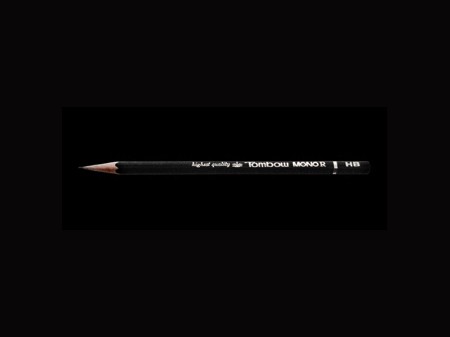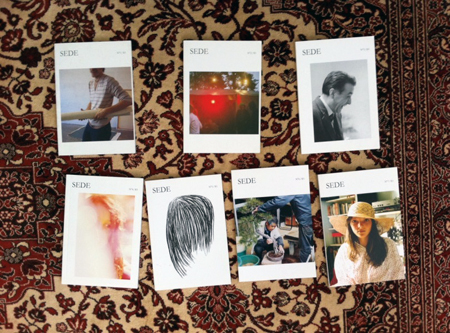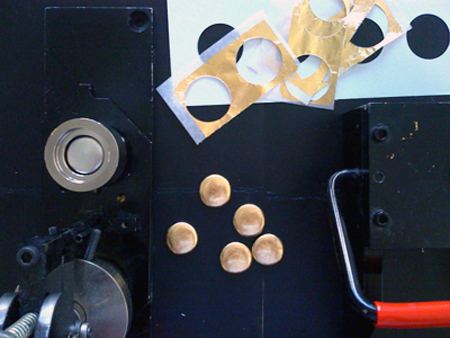Search for ‘Harsh Patel’ (4 articles found)
Harsh Patel at Cleopatra's

View of "New Typography," March 2–March 30, 2014.
Cleopatra's, 110 Meserole Avenue
Harsh Patel’s New York debut presents a knee-high platform covered edge to edge with monochrome plotter prints, in which graphics interleave bits of signs, photographs, and mysterious symbols into an obscure iconography. One panel, Blix, 2014, is a specimen sheet for an LED font that recalls Mick Haggerty’s digitized silhouettes on the cover of The Police’s 1981 record Ghost in the Machine , which has been overlaid with the shadows of gothic hardware: chains, hooks, and dagger shapes that float over the strict grid-logic of the letterforms (each plane suggests a different sort of torture).
Patel’s body of work inhabits a twilight region that resists the distinctions of art or design, printing or publishing. Over the years, his several micro-presses (with names such as 3DX, Zulu, and Sister) have produced numerous small books. Like Ed Ruscha’s “Twentysix Gasoline Stations,” they flaunt their physical cheapness. The eight panels on view in this show incorporate motifs from a variety of his past productions, which over the years have encompassed various forms of printing and distribution.
In 2009, a discography of the late-1980s New Zealand music label Xpressway appeared as a stapled book numbered “Sister 5”, set in an elegant serif font as if a catalogue raisonné. Other numbered objects include tote bags, books of poems, a series of still-lifes, postcards, one-inch buttons, and a curiously frightening red book titled PASSWORDS in stark black. The words and symbols, painstakingly whittled out of any context, are intermingled like the archaeology of obsessions in a teenager’s notebook. Phrases and icons repeat until they take on the quality of a mantra. In 2011, Patel composed a photocopied booklet titled Bruce Lee for the Swiss zine press Nieves. Lee appears here as well, tall and brawny adjacent the curves of a Fraktur-like letterform—or part of one—which, like all these works, is distorted by the folding of the material onto itself, and in the process achieves a kind of autonomy.
Interview With Harsh Patel
Hey, Harsh. Where are you from, originally?
I was born and raised in Nairobi, Kenya up til age 9 or a bit later. My secondary years were spent in Texas.
You were living in New York and you just recently moved to Los Angeles. How has that been? Any LA moments so far?
No particular moments. It’s sort of a never ending impression process. Overwhelmingly positive, per my tastes. I’ll wait to see where it goes, going on five years here now. I love to drive my car through Los Angeles.
Has the move affected your work or your projects in any way?
Yeah. I think I’ve changed entirely since I’ve lived here. Far more aware and comfortable with the pace at which I take in and process everything.
Have you found anything recently (ephemera, artifacts, etc) that you’ve been really into?
Himaa (http://www.himaa.cc) very kindly gave me a black and gold pencil from Japan which I like to write with. Apparently, these are standard fare there.
Any recent trades to speak of?
Yes, with two of my favorite publishers, Juan Moralejo and Benjamin Sommerhalder. I forgot what I traded Juan for a complete seven issue set of his magazine Sede (http://www.revistasede.com), and I traded Ben the entire 10-project catalog of my label Zulu for all five issues of his [pre-Nieves] magazine Zoo (http://www.nieves.ch/catalogue/zooinside.html). I wouldn’t trade either of those for the world.
Can you include a mix or a song? (Our blog needs some music up in here.)
This particularly good performance of “Like A Daydream” by Ride.
And while we’re at it, any youtube clips you’ve been into recently?
A lot of interviews, I guess. That’s probably the one format I consume more than any other. I like watching Norm Macdonald’s talk show appearances, particularly on Letterman. Bernie Mac talking to Charlie Rose.
Are you more of a collector or a documentarian? Do you distinguish between the two?
I’ve never seen myself as either of those, or thought about them much. I do collect a few things, but, I consider that collecting a hobby on its own and haven’t considered too much it in regards to my work, yet.
Do you think context is important in presenting your work?
Coming from a very middle-class angle, I have a very pointed opinion about “pop”. Surface is important to me. I do think getting to know someone better as a person is always a way to penetrate past that surface, but that’s a personal decision, I suppose. I don’t think I lessen something’s validity, myself, by choosing to skim over it. There’s still a way to get something constructive out of it. And, who has the time, anyway? I’m recommended one movie or book or whatever else a day, it’s too much. Naturally I’m glad to meet people who are really interested in who I am and why I do this or that, but, more often than not I am invisible. And I’m alright with that.
Any thoughts on design right now in 2011?
Read “Andy de Fiets: Letter to Robin Kinross” published by True True True (http://www.truetruetrue.org)!
And anything coming up you’d like to let us know about?
I’ve just published a few new books: “Guido Poems” with my friend Miles Jopling is available at Stand Up Comedy in Portland, and “God God Technology God Berlin” by Maxwell Simmer and “Standard Remote” by Dena Yago are available at X Marks The Bokship in London.
Harsh Patel is a graphic designer based in Los Angeles.
Harsh Patel - LESSON ONE
Although the greater extent of Harsh Patel‘s practice is producing art multiples, Lesson One focuses on a selection of 40 books originally issued under his publishing labels: Sister (2009-2010), Zulu (2010), and Zulu Demon City (2011). Patel’s books are an aspect of his production where he is entirely responsible for crafting the object. His formal execution is authoritarian and engages with his background in graphic design. Each book is made by hand and released in small editions. Distribution is exclusive. With subjects ranging from music, to poetry, to art, the works fall somewhere between collaboration, appropriation, and tribute. Overall, the collection creates a library of personal iconography, artistic influences, and self-portraiture.
March 12 – April 11, 2011
Young Art, Los Angeles







